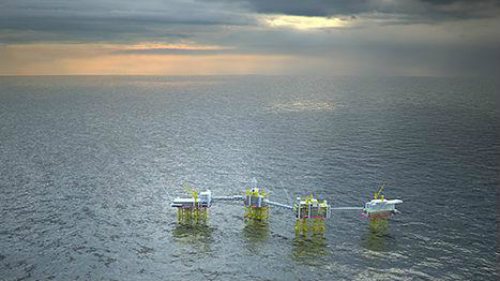Norway's Oil Sector Set to Repeat Mistakes

Norway's offshore energy sector may be repeating the mistakes of the last big oil slump, removing too much capacity too soon and leaving the industry unprepared for any eventual rebound, senior sector insiders said.
Faster than many others, western Europe's biggest oil producer is scrapping assets and laying off highly skilled workers even though rebuilding this capacity to meet future demand will be costly, time consuming and likely to accelerate cost inflation.
"We must not end up in the same position as around 2000, when too many had been laid off and we spent almost 10 years getting back the people," said Betne Nyland, the head of the oil directorate. "I don't think the oil companies have learned anything from back then."
As oil prices dropped to $10 per barrel in 1998 and 1999, Norway's oil firms removed capacity and rebuilding took so long and was so expensive that cost inflation ran at seven percent a year for most of the next decade.
Even as oil prices then surged, per unit operating costs rose more than four-fold after 2000, meaning that returns had begun falling well before the current price slump.
Norway is different to Britain or the Gulf of Mexico because of the dominance of one player, state-controlled Statoil , which sways other, smaller firms with its investment decisions.
"They behave a little like a herd of sheep," Runar Rugtvedt, the head of the oil and gas section at the Federation of Norwegian Industries said. "There's too much of a herd mentality out there instead of estimating projects independently and acting a bit countercyclical."
"We are critical of Statoil because they are braking too hard in terms of spending on maintenance and modification, and because what they've stopped, they will have to restart later."
Statoil declined to comment.
A 78 percent oil tax and the world's best paid oil workers, with average annual salaries of almost $180,000 according to recruitment agency Hays, make Norway one of the most expensive countries for the oil industry to operate in.
The government provides generous subsidies for exploration but overall costs are among the highest in the world.
MORE STATOIL CUTS?
Oil investments, already down in 2014, are seen falling by 23 percent over the next three years as energy companies stop many new developments, and delay maintenance and upgrades.
Statoil announced plans a year ago to cut capital spending by $5 billion over three years and analysts expect the company to announce more cuts next Friday at a strategy update.
The firm's problem is that it needs oil to rise back to $110 per barrel for it to finance investments and dividends from its cash flow, analysts say.
Although Statoil may reduce its dividend next week, it will continue to return cash to shareholders, so will likely have to take cash out of investments to fund existing projects.
"Our dividend policy remains completely firm. Dividend is highly prioritized and remains firm," acting Statoil CEO Eldar Saerte said.
Energy firms have laid off or plan to let go around 12,000 workers, or just under 10 percent of the sector's workforce, with the focus on highly skilled workers involved in future projects, or staff involved in maintenance.
However, maintenance has to be carried out eventually while future projects will be profitable if the oil price rebounds.
Statoil has led the layoffs but oil service company Aker Solutions has also laid off or transferred around a 1,000 workers.
Among the biggest victims are frontier projects in the Arctic and investments increase recovery in mature fields.
"When I see profitable projects that aren't carried out, I question whether too much priority is placed on the short term rather than the long," Gunn Waersted, the head of state holding firm Petoro and Executive Vice President of Nordea told financial daily Finansavisen.
Ultimately, one project, the $28 billion Johan Sverdrup field in the North Sea, could stop the sector cutting too far.
The field, to start up in late 2019, will produce up to 650,000 barrels per day of oil at its peak, almost six times the biggest field in Norway now, and not even the low oil price will stop its development as it will be profitable even if oil prices fall to $40 per barrel, analysts say.
By Stine Jacobsen (C) Reuters 2015.
